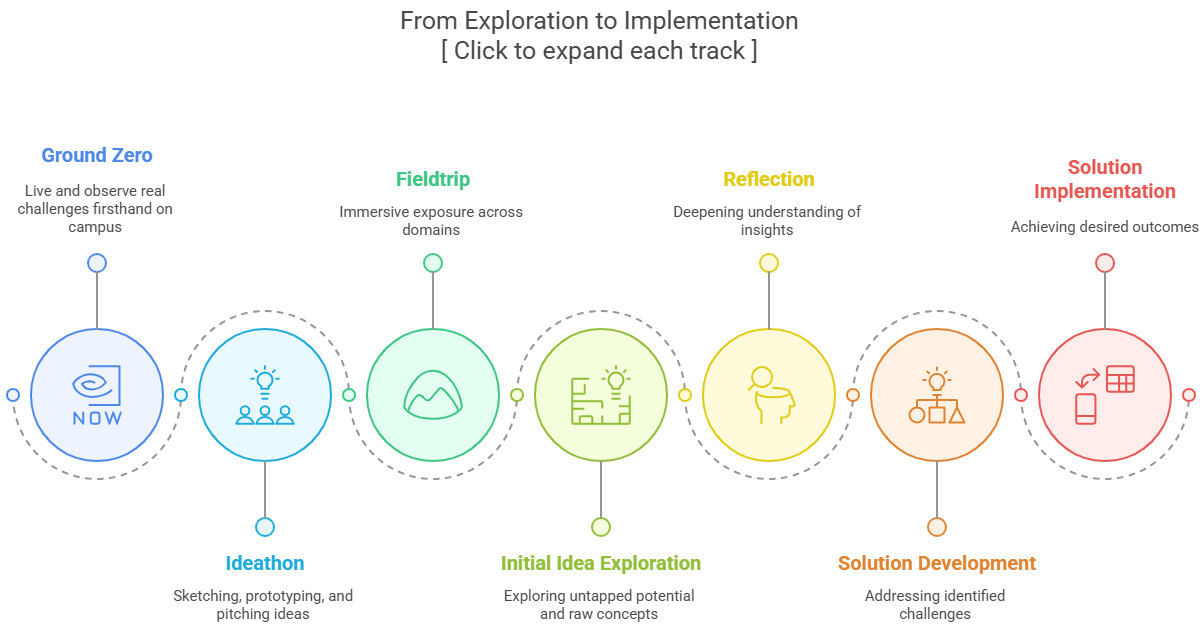
In REACT, learning begins where life happens — in fields, forests, clinics, and communities. You’ll step into real systems, uncover challenges from within, and build solutions that matter. Each phase of the journey is crafted to move you from immersion to insight, and from ideas to real-world impact.

🚶♂️ Ground Zero (3 Days)
Become a field worker in your own campus. Experience reality before defining problems.
For 3 days, step away from your usual routine. Shadow workers, talk to users, observe systems up close. Don’t assume — absorb.
Ground Zero is about presence. Be on the ground, in motion, immersed in people’s lived experiences.
🔍 Part 1: Act, Don’t Analyze
These 3 days are not for solution-thinking. Your job is to:
- 🧭 Observe workflows and routines
- 🎙️ Have honest, informal conversations
- 📸 Capture photos, sketches, or voice notes
- 📝 Keep a daily log of what you saw and felt
- 👂 Focus on listening, not leading
🔦 Part 2: Extract Lived Signals
From these days of presence, start to pull early signals:
- What are people really struggling with?
- What’s unspoken but visible?
- Where are gaps between need and delivery?
- What surprised or challenged your assumptions?
This is not formal research. This is immersion. The goal is to carry stories, scenes, and observations — not charts or checklists.
📌 Output of Ground Zero
By the end of 3 days, you should have:
- 📖 A journal of experiences (text, audio, visuals)
- 📷 Visual snapshots of real systems or behavior
- 🗣️ 3–5 compelling raw observations or user quotes
- 🧠 One sentence that captures a tension you witnessed
Ground Zero gives your future problem statement **weight and witness**. It’s no longer “an idea.” It’s a story you saw unfold.
🧭 Don’t forget — you’re not solving yet. You’re **feeling** the ground beneath the problem.
🌱 Ground Zero is where:
Curiosity meets empathy
Ideas gain context
Innovation roots in reality